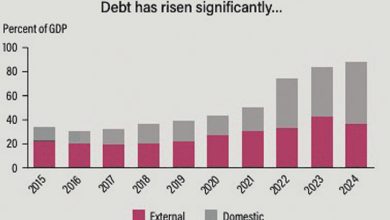India extends pigeon peas export window
The Indian Government has extended Malawi’s pigeon peas export quota for the 2024/25 marketing season, a development that presents an opportunity for farmers and the country to boost foreign exchange earnings.
Ministry of Trade and Industry spokesperson Mayeso Msokera said this means that pigeon peas farmers will have continued access to the Indian market beyond the end of a similar waiver of export quota extended to Malawi in the 2023/24 farming season.
The extension follows the removal of the waiver of a 50 000 metric tonnes (MT) export quota imposed on Malawi by the Indian Government in 2022.
Msokera said the move by the Indian Government is a welcome development in the country’s trade relations with the Asian country.
“The ministry wishes to urge farmers, producer organisations and traders to take advantage of the unlimited market of pigeon peas offered by India by producing and exporting more of the commodity,” he said.

The move is in line with Malawi Government’s wider diversification plan, which involves the intensification of legumes growing to supplement foreign exchange from tobacco, which is the country’s number one forex earner, but its earnings have been dwindling over the past five years.
However, despite the existence of the waiver, Malawian producers and exporters have been failing to utilise the readily available market, putting to question the country’s readiness for such a huge market for pigeon peas.
Ministry of Trade and Industry data shows that in 2022, for instance, Malawi exported 69 151MT of pigeon peas with a significant portion of the exports going to United Arab Emirates, the country’s top export market for the crop.
Out of this, India only imported 20 000MT, due to the import restriction imposed by the Indian government in New Delhi.
Speaking in an interview yesterday, one of the country’s exporters Leston Mulli of MBL Holdings Limited, said Malawi is failing to reap from such deals because of reduced production levels, quality of produce and prices.
He said: “We are not competitive because our landlocked nature already puts us at a disadvantage.
“Again, we have seen that every time the commodity has not done well on the market, farmers abandon pigeon peas farming which also impacts output.”
Mulli said to maximise potential out of the deals such as the India one, there is need for collaboration among players to boost production and also producing well graded pigeon peas for the export market.
Agriculture policy development commentator Tamani Nkhono Mvula observed that the biggest challenge Malawi faces is low production due to scarcity of land in areas where pigeon peas are grown as they also compete with other cash crops.
He said: “If we are to better utilise this, we need to start producing more and promote pigeon peas at the same level we are promoting other legumes and also organise our value chain.”
Nandolo Farmers Association of Malawi chairperson Susan Chimbayo said low access to finance and the absence of structured markets affects production.
She said pigeon peas production has remained under small-scale farmers and on small pieces of land with minimal commercial orientation.
Since India introduced the trade policy on import of pigeon peas in 2017, Malawi lost 64 percent in export earnings.
Indian High Commission data shows that Malawi exports to the Asian country fell from $39.32 million (about K67 billion) in 2016/17 to $9.05 million (about K15 billion) in 2020/21.





